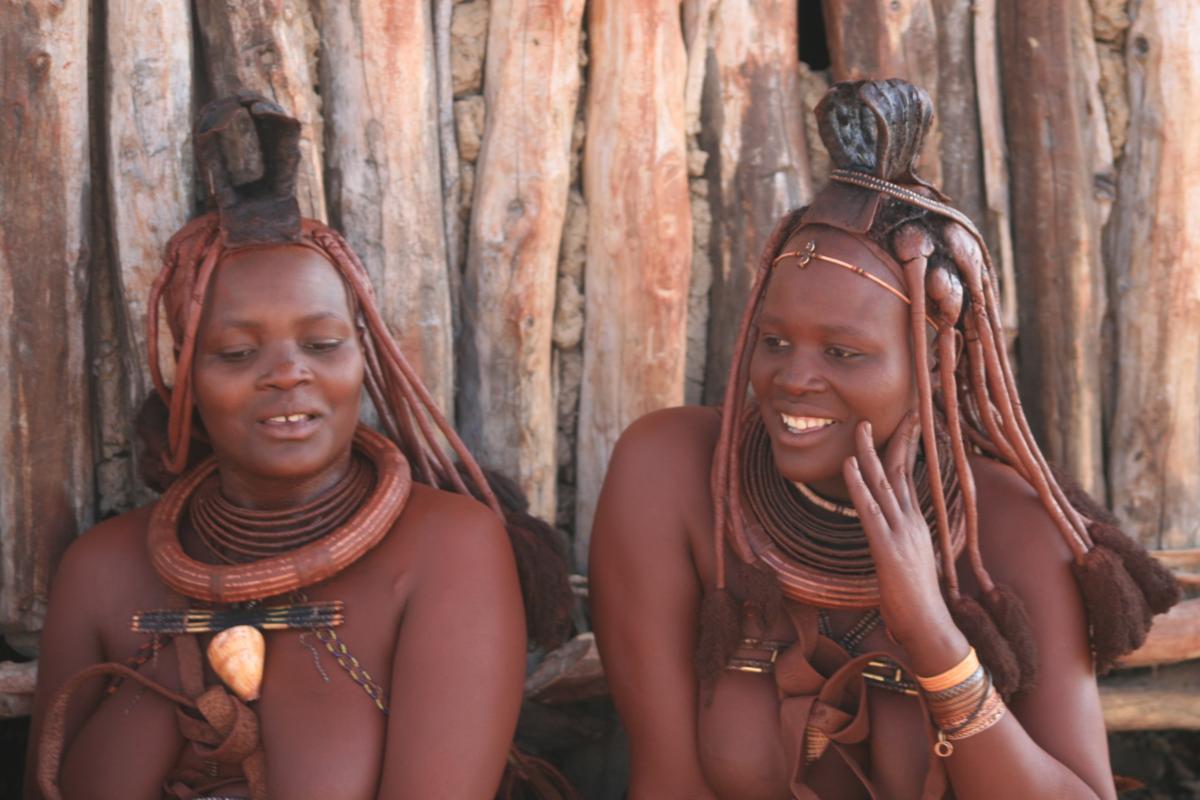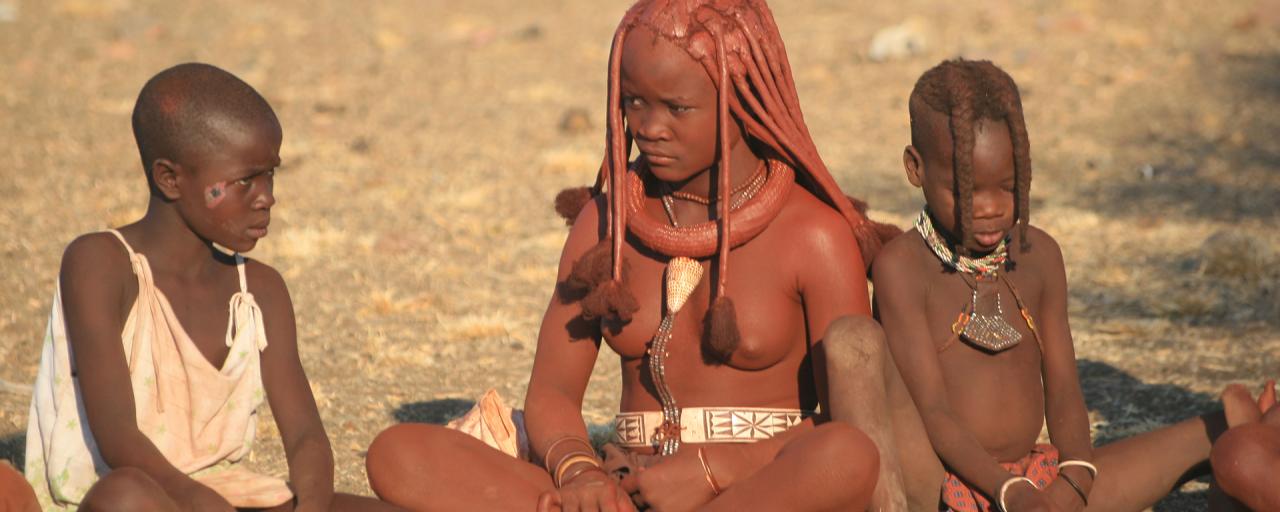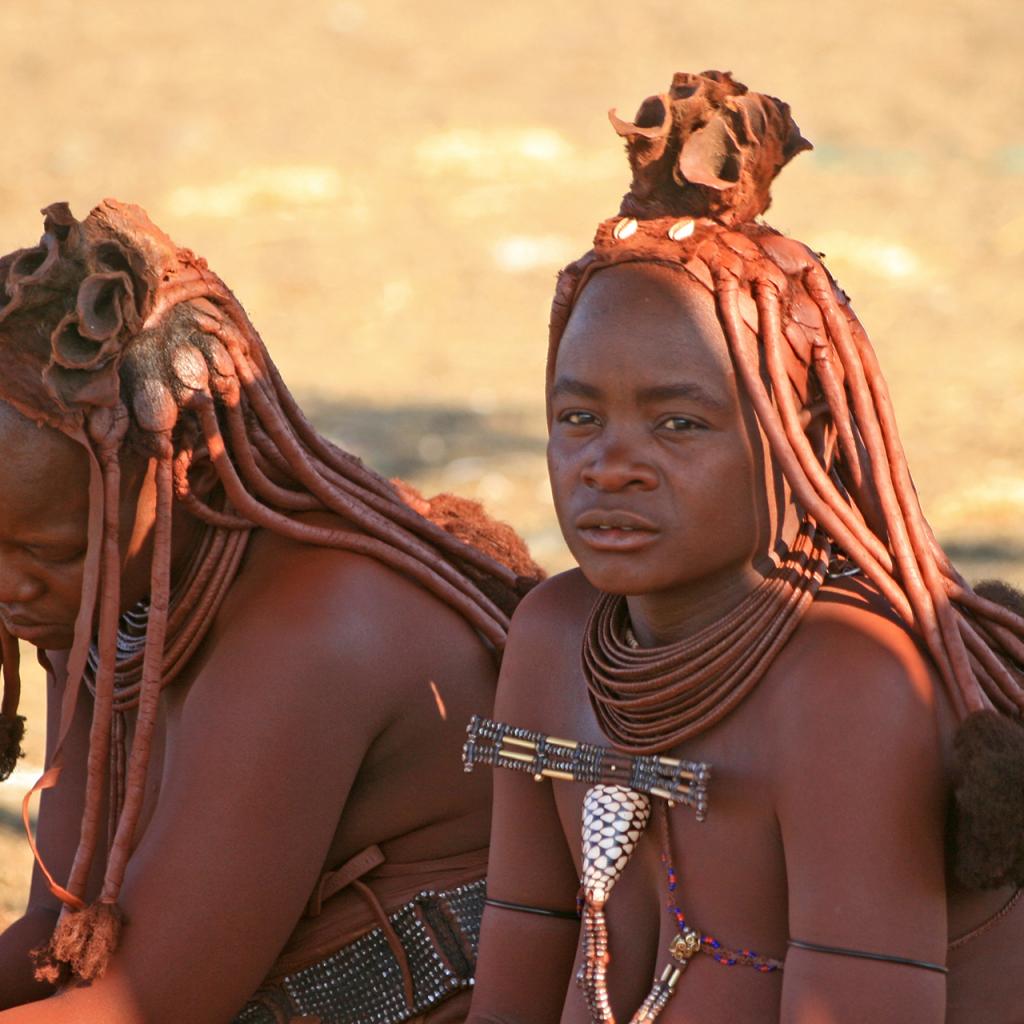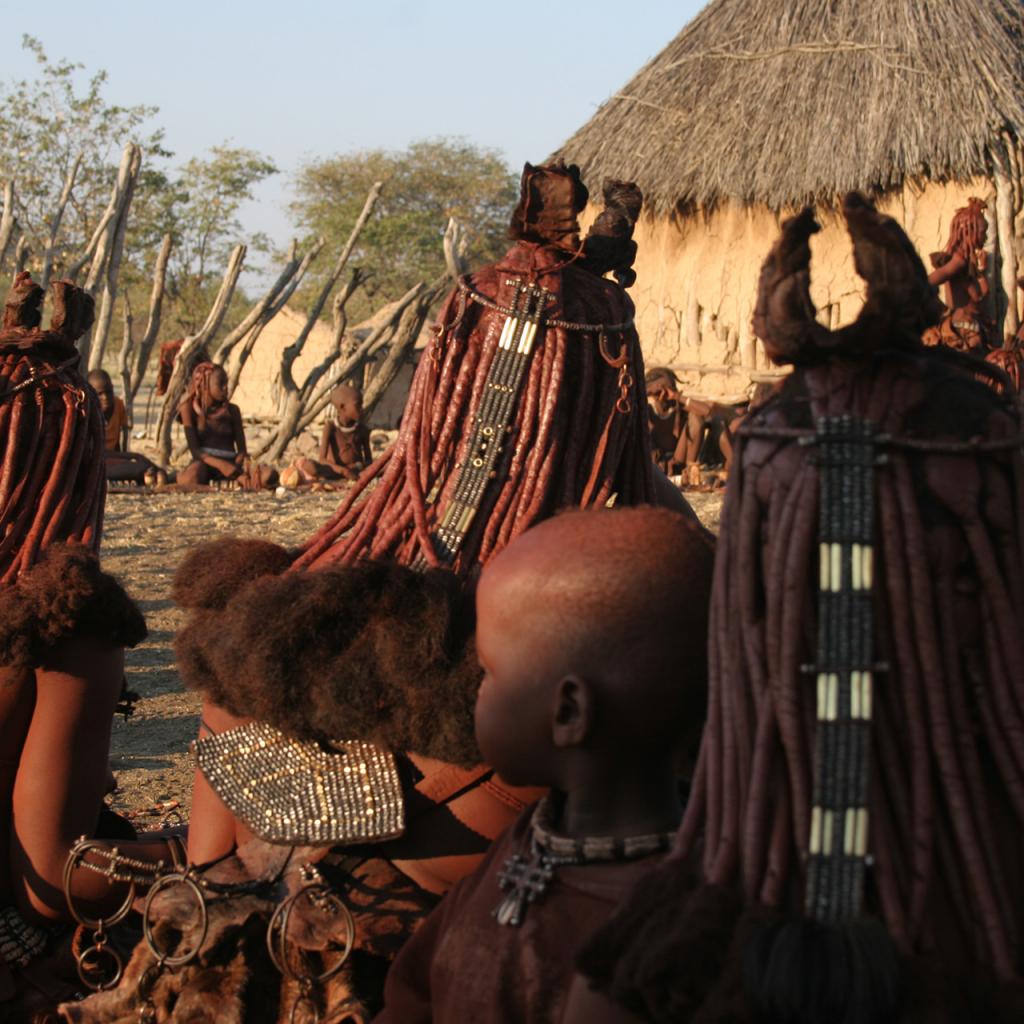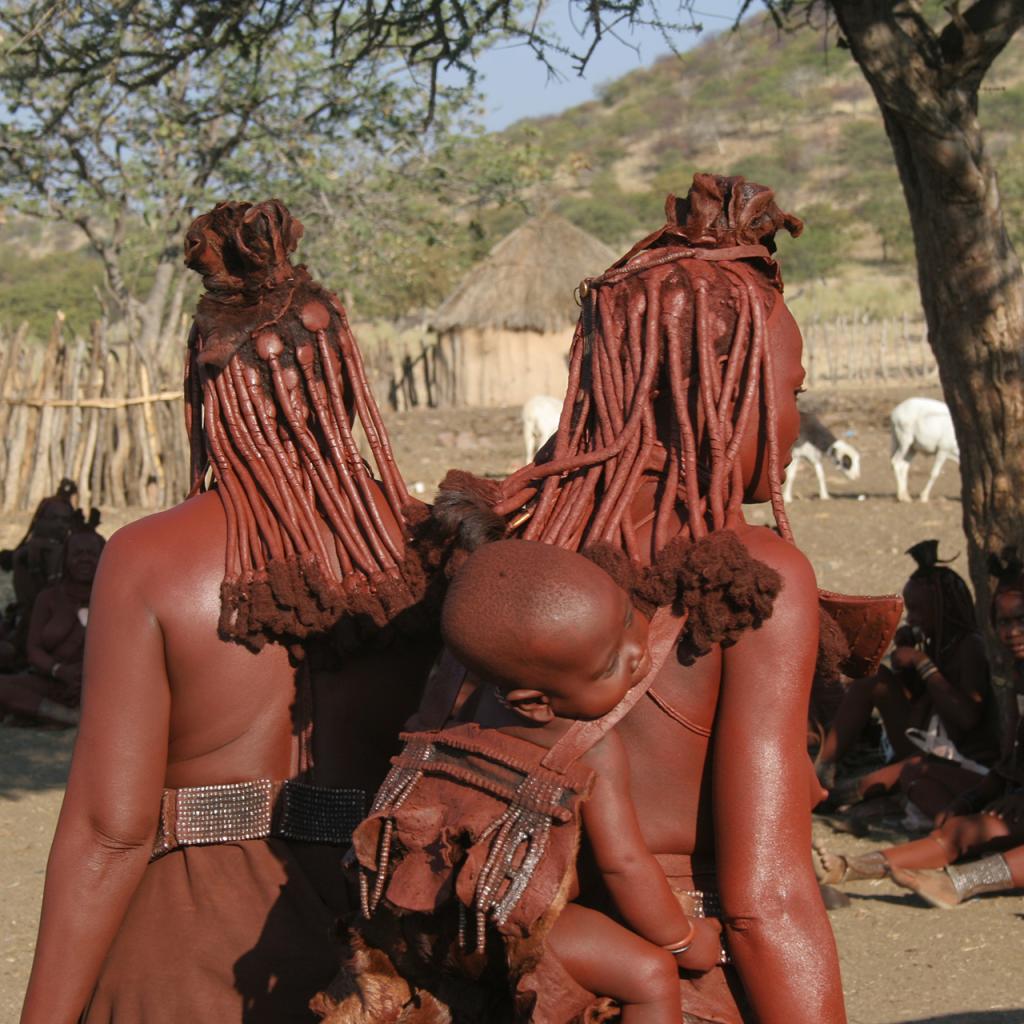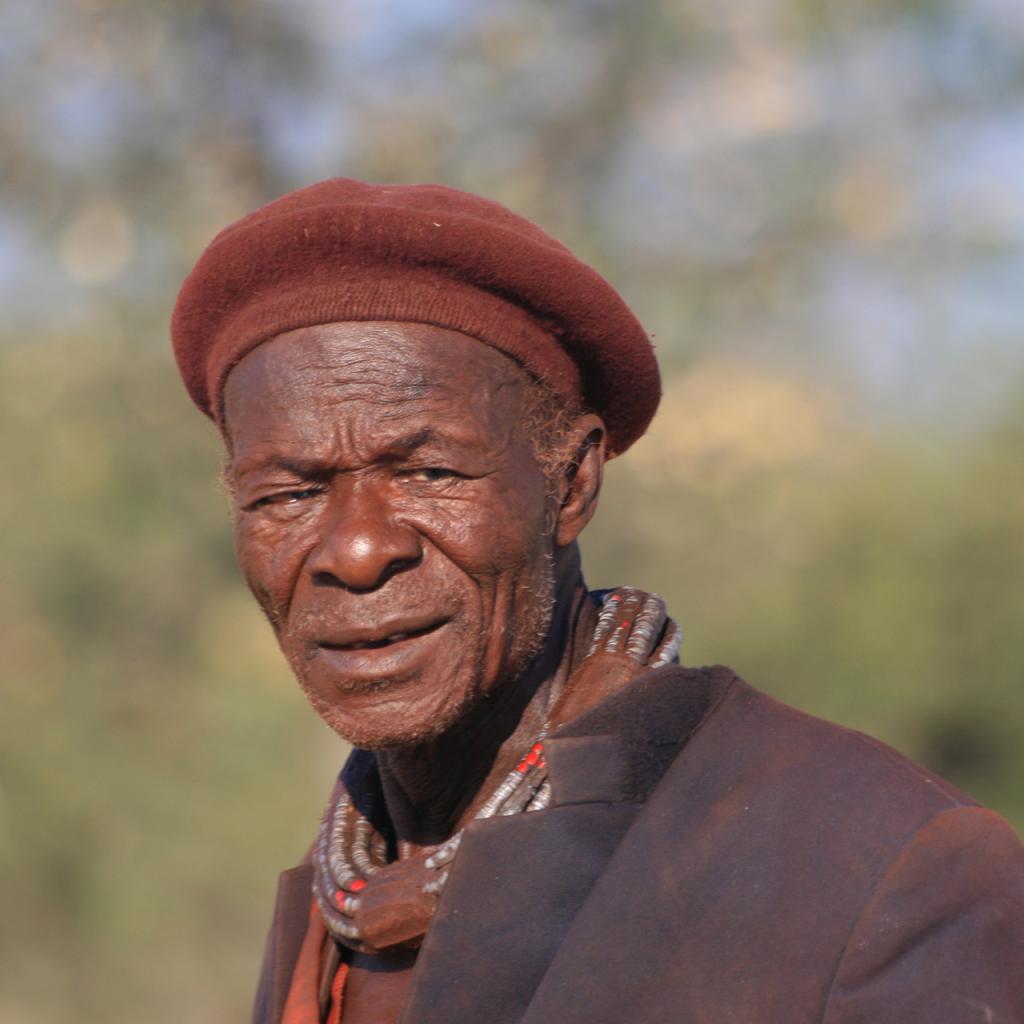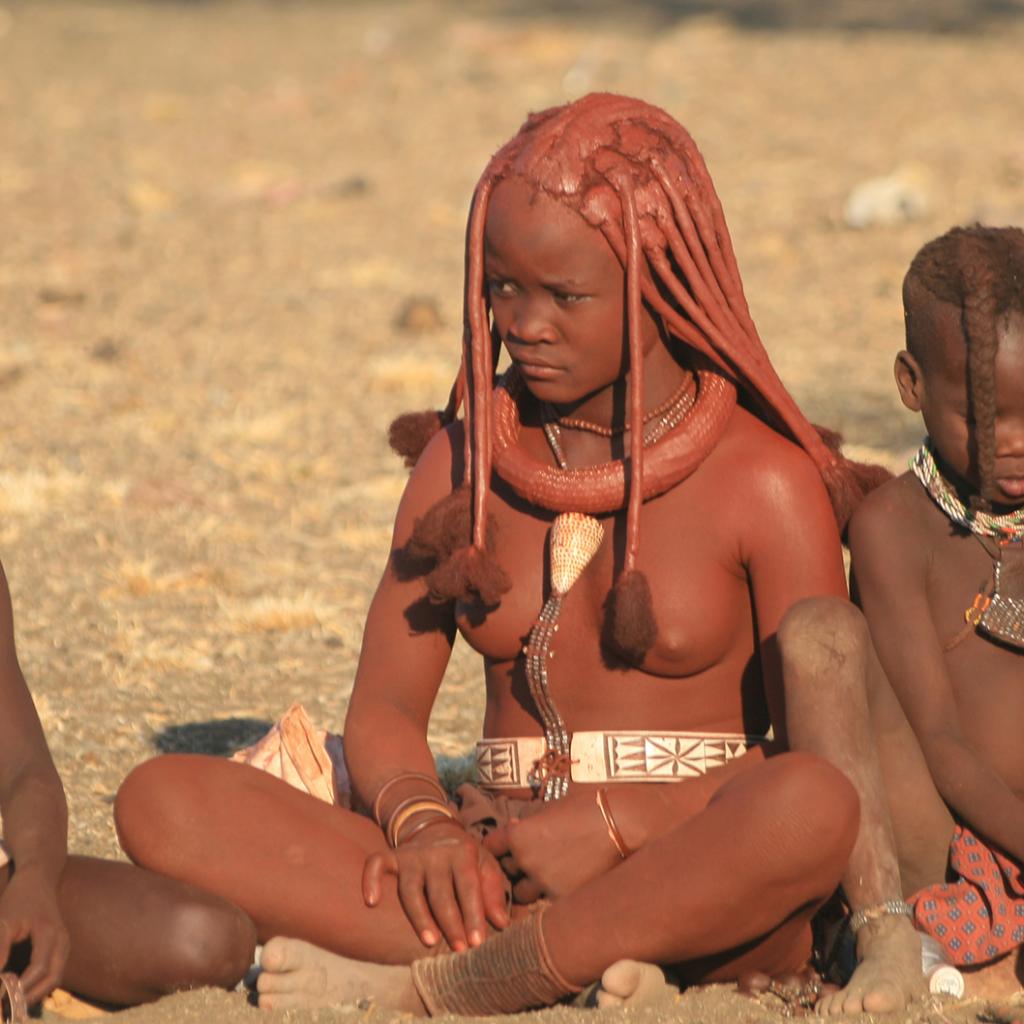The Himba live in Northern Namibia, they refuse modern progress and Western culture and still live according to ancient traditions.
The villages have a circular shape and are generally enclosed by a fencing made up of mopane branches, for protection against any type of danger and to delimit the village borders.
The huts are circular in shape, too, and are built using mud, excrements and mopane branches. Access is via a small opening on one side and the interior is plain.
Huts are arranged around the central fencing, called kraal, where the cattle is kept. A sacred fire, the okuruwo, is lit at the centre of the village, close to the headman’s hut.
The Himba society is matriarchal. Women play a fundamental role in the Himba society and do most of the duties, such as the collection of water, the construction of homesteads and the care of the children.
It is up to the eldest woman of the village to tender the sacred fire. The fire must be kept lit at all time to protect the inhabitants from demons. This sacred fire is considered the spirit protecting the good.
Men mainly look after the cattle and take it on long transhumance, in search for better pastures.
Anthropologists, who have studied the Himba social structure, have stated that they are characterized by a double, or bilateral, lineage, that can be found in other ethnic groups who live in extreme environments.
Double lineage means that each Himba belongs to two clans at the same time, the matriarchal and the patriarchal, this enables them to rely on two family groups when in need.
The patriarchal clan, oruzo, passes the residence down to new generations, the matriarchal one, eanda, which is much more important, hands down the property of land and cattle.
The importance of being able to count on an extended family is confirmed by a tribal teaching that says: “Do not built your village starting with cattle, start with people”.
Polygamy is permitted in the Himba society, each man can marry more than one woman, the first marriage is usually arranged by the village elders whereas the following ones are free, the only thing required is the consent of all the spouses.
The different clans living in a village are led by a headman who establishes rules and prohibitions, such as the ban for menstruated women to eat the meat of a certain animal or to milk cows.
The Himba are animists, their religious beliefs revolve around the god Mukuru and the cult of ancestors.
Each family must keep the ancestral fire lit to communicate with Mukuru through the intercession of the ancestors.
The Himba also believe in witchcraft, omiti, and “black magic”, and think that those who practice omiti can even cause illness or death.
Another belief is related to the so-called fairy circles, the Himba believe they are the prints left by gods when they go to certain spots to pray, when a Himba gets sick, he or she is brought to the centre of the circle of fairies for healing.
Life, tradition and culture of Himba people
- Himba clothing and accessories
- Himba rituals of birth and death
- Himba history
- Himba people social organisation and religious beliefs
